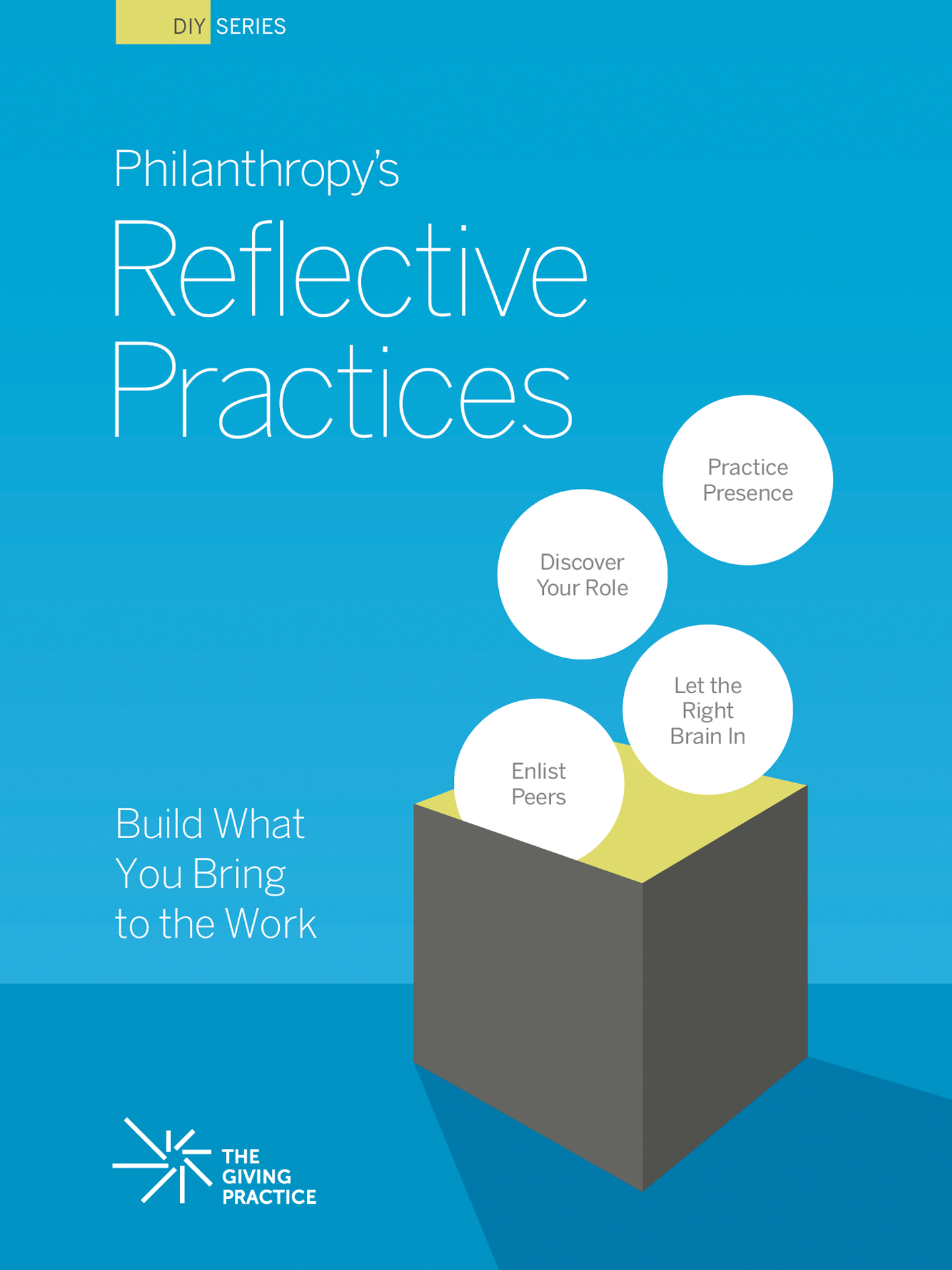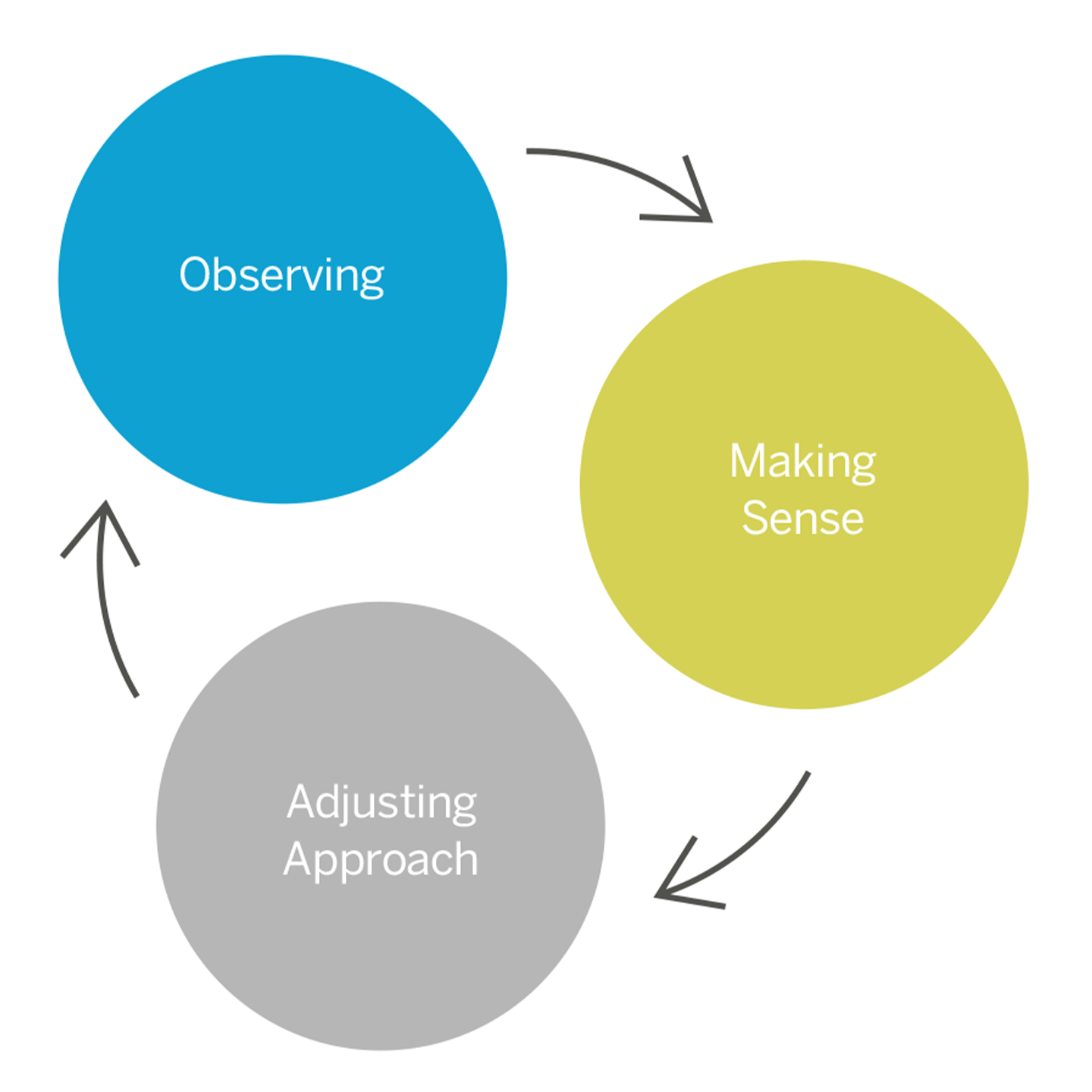Build What You Bring to Work with Reflective Practices
In philanthropy, you have two big jobs.
Your first job is to be knowledgeable about the what of the work you are supporting.
You do that by staying current and networking to grow your expertise.
Your second job is to put that expertise into play in conditions with power differentials,
perspective differences and no clear right answers. The how of your work. This is where reflective practices comes in.
What are your dilemmas at work? Dig into this guide from peers in philanthropy about the challenges they face and their go-to resources for managing them.
- Learn how to understand roles and bring yourself to the role needed.
- Try out consultative stances to listen and help build on what’s being said.
- Enlist peers for fast knowledge-building sessions.
- Develop right brain thinking for creative and productive strategizing about new or controversial ideas.
Reflective Practices n. pl.:
Tools and techniques that can help you navigate challenging situations in your work.
Every reflective practice involves three steps: observing what is happening within and around you, making sense of what you see, and adjusting your approach to get to a better outcome.
Reflective Practices Insights



Reflective Practices Guides

in Philanthropy Matters





